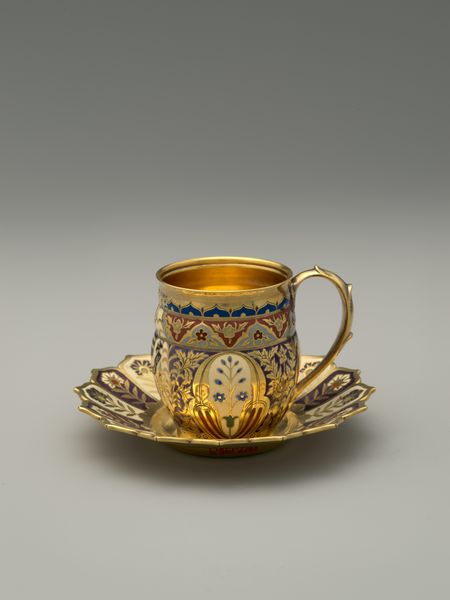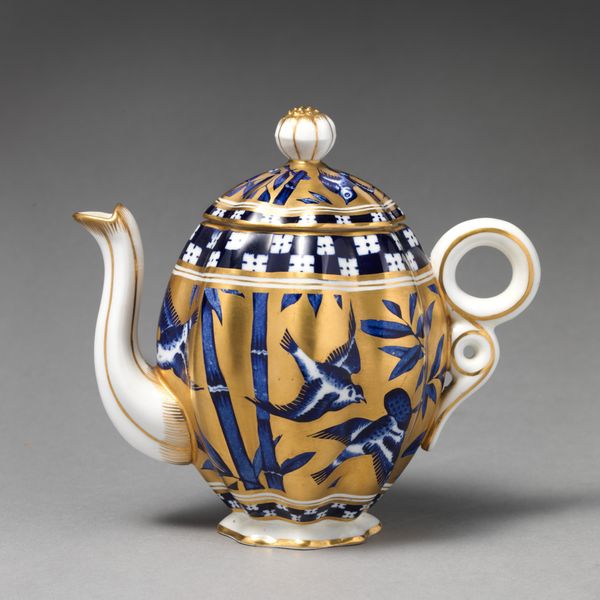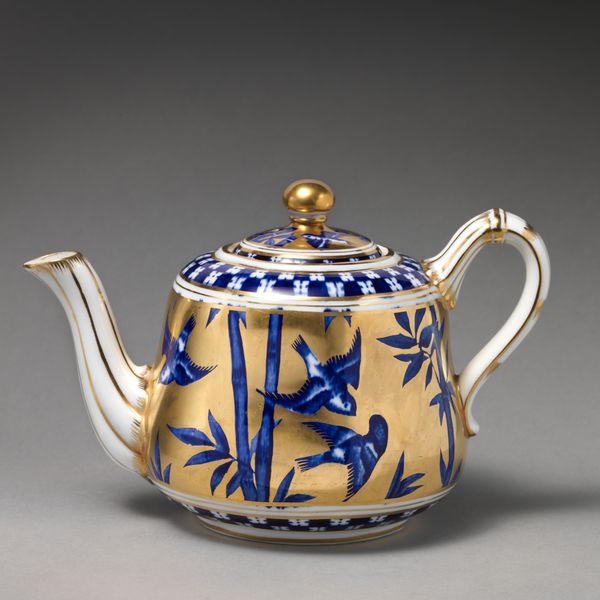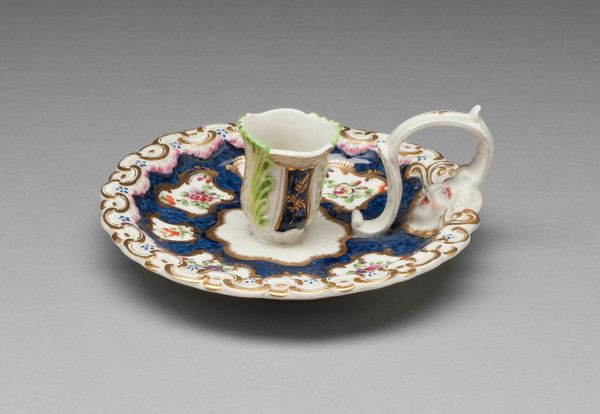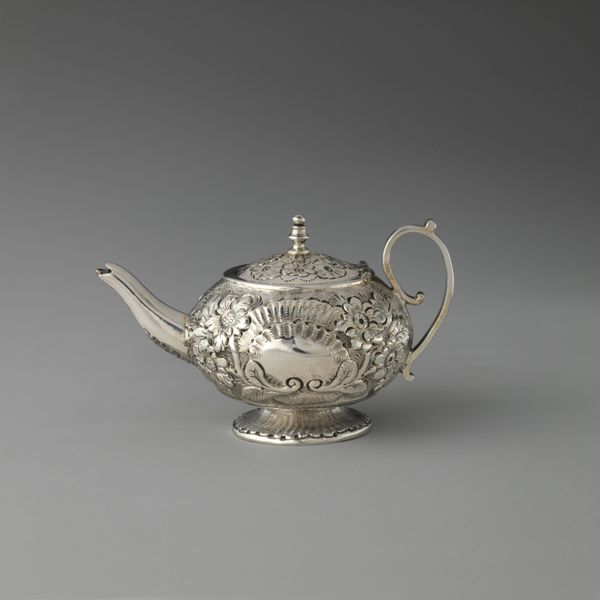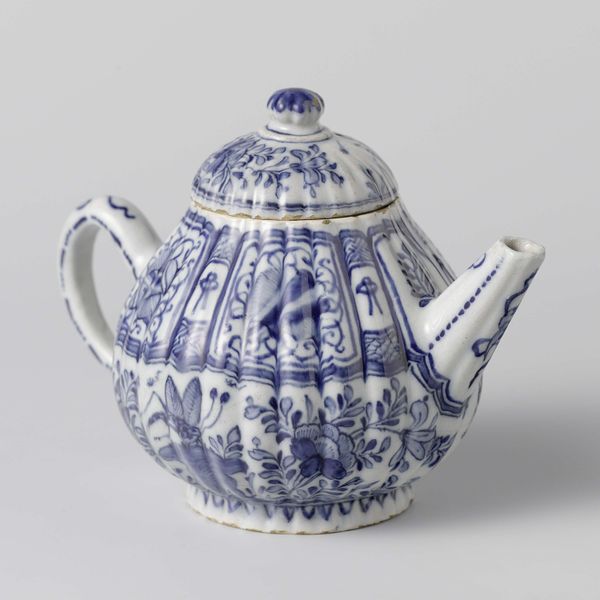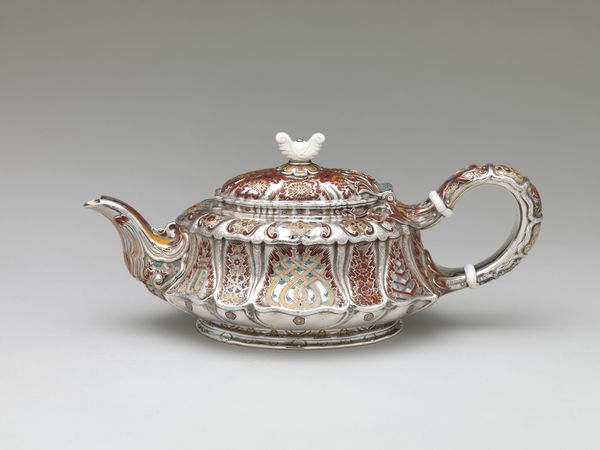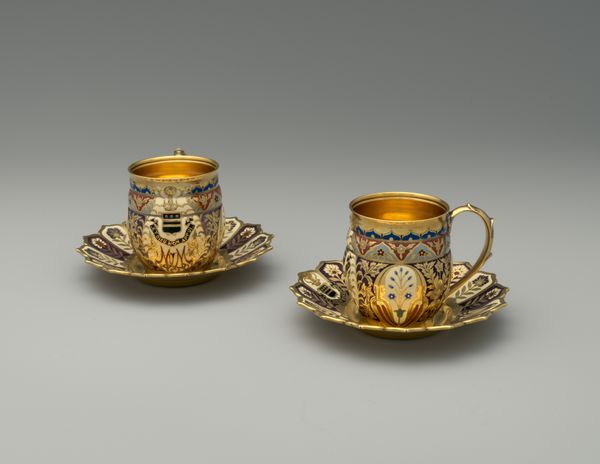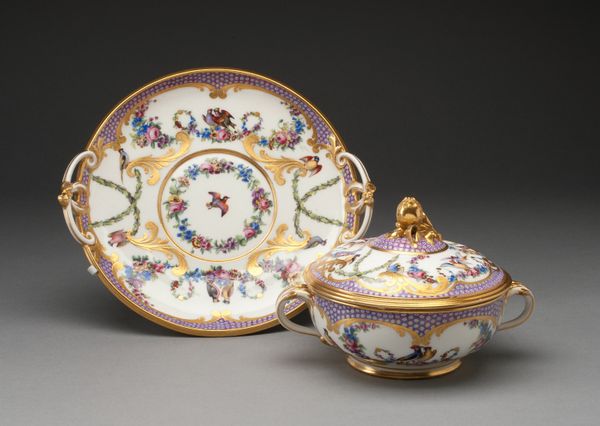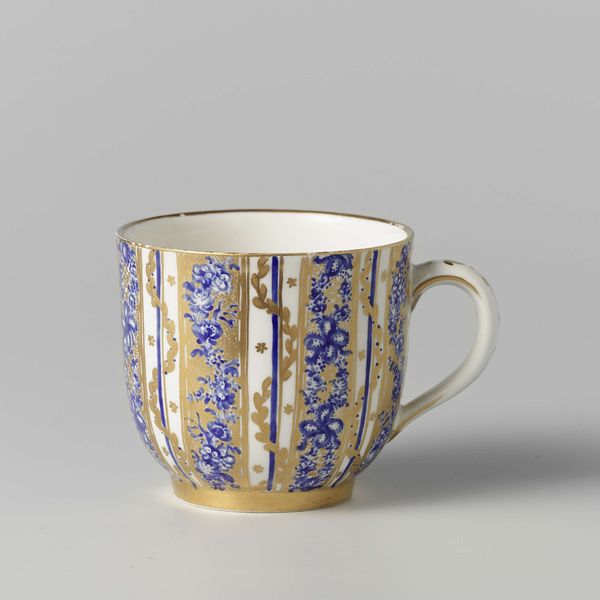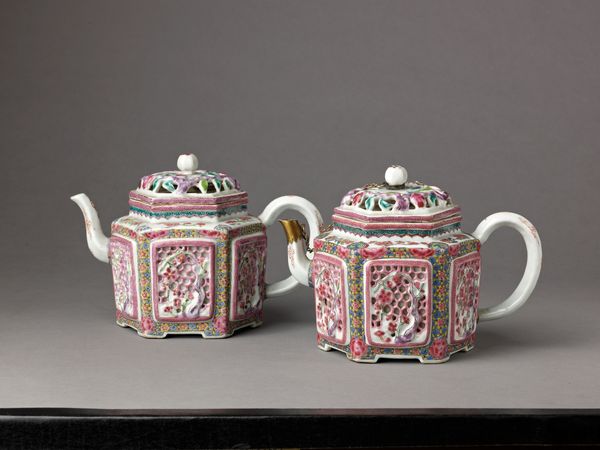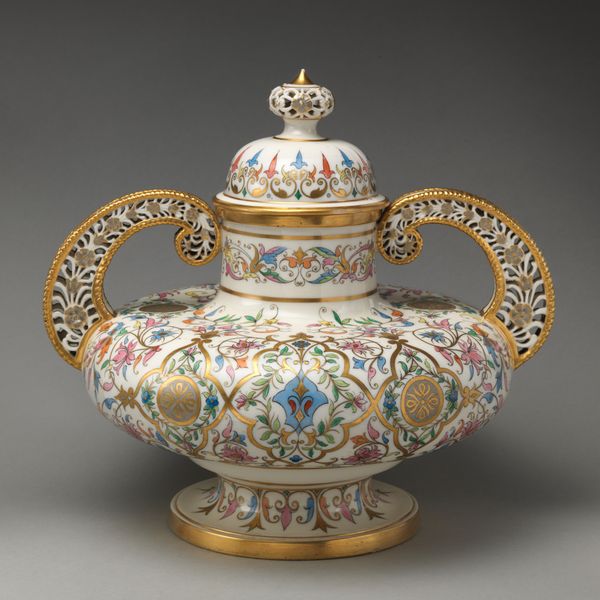
ceramic, earthenware
#
ceramic
#
earthenware
#
stoneware
#
ceramic
#
decorative-art
#
rococo
Copyright: Rijks Museum: Open Domain
Curator: I'm struck by the meticulous decoration on this "Tea service" crafted circa 1765-1770 by Porzellanmanufaktur Frankenthal. It’s currently held here at the Rijksmuseum. The delicate stoneware seems almost too precious to use. Editor: Absolutely, it's eye-catching! The blue and gold patterns, vertically striped and filled with flowers, project opulence and ceremony. Do you feel the Rococo influence, with that almost flamboyant decoration? Curator: Precisely. Rococo was the style du jour, often flaunting wealth. A set like this one would have served a social function as much as a practical one. Tea drinking in the 18th century was rapidly turning into a cultural phenomenon for the elites. Editor: It’s more than just utility, isn’t it? The matching patterns across the various objects, teapot, sugar bowl, cream pitcher, even the tray create a sense of harmony, and a shared identity that would have served as a visual shorthand within the household. Curator: Indeed. Serving tea became part of a wider ritual, and this ceramic tea set exemplifies the era's interest in controlled environments for the leisured classes. It almost feels designed to promote conversation. Editor: Visually, the stripes and flowers form almost a language in themselves. Stripes project authority, a structural visual assertion, the flowers add a lightness. It could signify the domestic virtues: order and beauty combined in the life of its user. Curator: That’s a fascinating read. I agree; domestic virtue and conspicuous consumption went hand in hand during this period. This service really represents the social and economic structures of its time, the aristocratic values taking physical form in ceramic objects. Editor: Studying the piece certainly reveals those layers. I am now considering how modern-day rituals echo these patterns, in both what they conceal and reveal about status and values. Thank you for this enriching observation!
